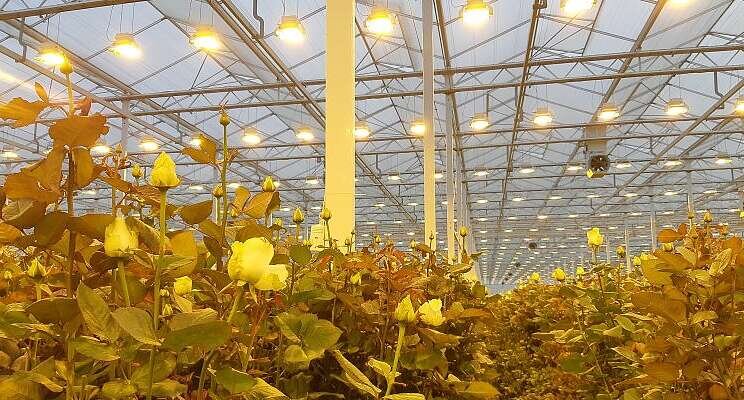Best method for dehumidifying greenhouse air differs per grower
Added on 14 April 2022

The air above the energy screen is drier than the air at the bottom of the greenhouse. By leaving the screen cloth ajar, the two air layers mix and the relative humidity (RH) in the crop decreases. Because a screen is never completely horizontal, screen gaps are almost always accompanied by many horizontal air movements in the greenhouse, which can cause significant temperature differences (up to 5 °C).
Uniform distribution of the dry air
A solution for this is to suck in the air above the screen and blow it out below the screen. In that case, a more uniform distribution of the dry air is possible. WUR investigated such systems at a number of cultivation companies and at the research locations of WUR and Delphy: Airmix from Van der Ende Groep), VentilationJet from Hinova) and a ventilation installation from Technokas. The research showed that these systems each have their own characteristics, such as the blowing direction and amount. It depends on the grower's goals and the requirements of the crop which system and which capacity is best. At an outside air temperature of 12 °C or more, the capacity of the installations is often no longer sufficient to optimally dehumidify the air.
The greenhouse air can also be dehumidified with an air handling unit with a cold block. This installation sucks in warm, moist greenhouse air. The moisture in the greenhouse air condenses against the cold block. The cool air contains less moisture and can be returned to the greenhouse. Such a semi-closed system has the advantage that CO2 can remain in the greenhouse and that heat is also harvested. This is one way to achieve a fossil-free greenhouse.
Danger with dehumidification
Regardless of which technique is used, there is a danger with dehumidification. Many growers are used to setting a desired RH of, for example, 85%, but this percentage is rarely feasible with traditional greenhouses. With active dehumidification, this set point can be achieved, which means that more is dehumidified and more energy is used than the crop actually needs. This means that the set points of the climate installations must be critically examined.
The research into dehumidification is financed by the Kas als Energiebron program.
Click here for more information.
Photo Courtesy of Wageningen University & Research
Source: Wageningen University & Research
More news















